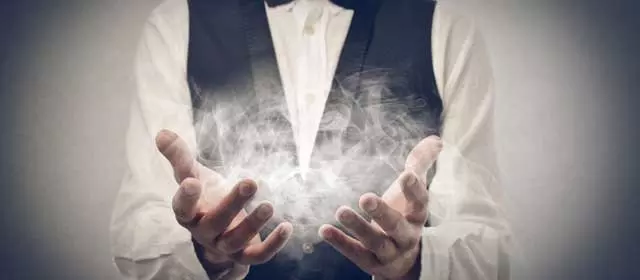The word magic comes from the Greek (through Latin) "magela" which means witchcraft. It is therefore largely attributed to magicians and wizards, soothsayers and enchanters.

The magician is a wise man who knows and uses the secrets of nature (the Magi). The magician is a technician who performs wonders: some magicians lived supposedly since the time of Jesus, did not eat, created precious stones or knew the secrets of alchemy to transform metals. The magician is both wise as a sage and skillful as a wizard.
The sorcerer is in opposition to the magician because he uses the forces of evil to harm or weaken. The dark wizard would be hurt by the mere presence of the wizard and his evil powers.
Black magic is therefore evil due to the very fact that the magician has consciously evil intentions and intentionally uses diabolical means. Dark wizards and sorcerers are supposed to be harmful to society, they can poison, bewitch, invoke demons and use spells to harm someone, cause droughts or devastating storms. Apart from doing evil, harming or avenging, black magic also produces love spells, communicates with the dead, or offers recipes for immortality.
White magic uses the positive forces of nature for altruistic or preventive purposes (blue magic). This magic uses beneficial means. It serves to heal, protect, exorcise, strengthen or reconcile. It invokes good spirits, angels, God ... White magic is very widely used when it comes to problems of romantic relationships (return of affection), money or protection against the evils of black magic.
Many magic rituals are accompanied by formulas, one of the most famous being "abracadabra" finds its origin in the Tales of the Thousand and One Nights whose author is unknown. Other rituals accompany acts of magic include: incantations to angels or demons and ritual dances ... Objects are also recurrent: candles of color, various incense, decoctions of various plants and 1000 objects sometimes unusual (mirror, photos, etc ...)
In the strangest of rituals, spellbinding consists of the seizure of a person's body or mind. The spell can be positive and is then most often used to seduce a person beyond their will. But, the spell can also be used on figurines of wax or fabric where one pokes it with needles in the place that corresponds to the part of the body which one wants to reach. In Voodoo witchcraft, this practice is particularly popular.
To get rid of a demonic hold, we resort to exorcism. In the Catholic Church, the Church publicly and authoritatively demands, in the name of Jesus Christ, that a person be released from the grip of Satan, in its original form, the first exorcism is practiced at the celebration of a baptism.
There is also a Muslim exorcism, regulated by several suras of the Koran. It has been a long time since witches were burned, but in some cultures, magic is still very popular, the marabouts, true or false abound, as much in Africa as in Europe, dowsing is still a beautiful tradition, and in some Latin American, African, and Caribbean countries, magic is more alive than ever.
All arts are largely inspired by magic to enrich their repertoire: witches, enchanters, diviners abound in literature, cinema or art. Magic is also the art of prestidigitation that does not appeal to any supernatural force but depends solely on the dexterity and talent of the "magician".






